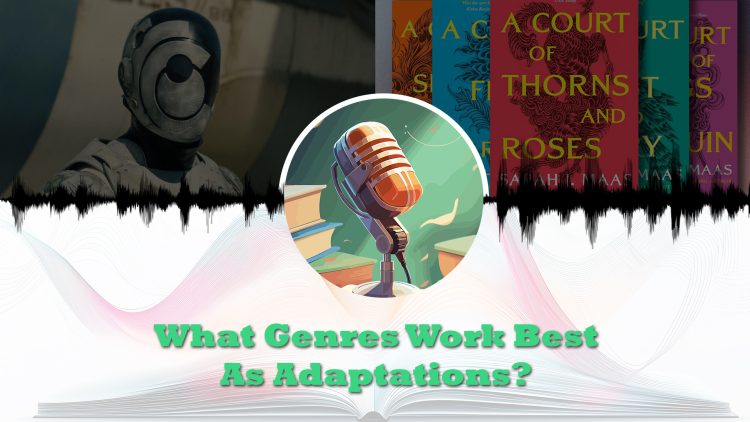In this episode of the Fully-Booked: Literary podcast, Meaghan and Shirin close out July’s theme of book adaptations. They’ve spent the month chatting about what makes a successful adaptation, what flops, and where things fall in between. This episode is a genre-focused deep dive where they talk about how different categories of books fare when turned into TV or film.
They kick things off by acknowledging that life has been chaotic lately, so this one’s coming out a little late. Still, they’re here and ready to go. Meaghan and Shirin say upfront that it’s almost impossible to quantify what makes one adaptation better than another, but that’s not stopping them from trying.
Note
The following is an editorialized transcript of our weekly literary podcast. If you would like to listen to the podcast, click the play button above orlisten on your favorite platform with the links below.
What Is On Our Nightstands?
Before diving into the genres, they each share what they’re reading right now. Shirin is working through an ARC of Shadowman by Shola Adeji, part of the Valiant Universe. It’s centered on Jack, a college student grappling with his father’s death and slipping into strange, dreamlike experiences involving a character named Baron Samdi. It’s set in New Orleans and has folkloric and supernatural vibes. She’s not far into it yet, but thinks it’s promising.
Meaghan, on the other hand, has been reading In Deadly Company by L.S. Stratton. It’s a murder mystery set in the Hudson Valley with strong Devil Wears Prada energy, full of rich people, secrets, and a locked-room-ish setting.
Meaghan loved it, twists, characters, pacing, all on point. She also read The Dark Lord’s Guide to Dating and Other War Crimes by Tiffany Hunt, which she described as “assistant to the villain” meets spicy banter-filled fantasy. It’s quirky and fun, and she’s eagerly awaiting the sequel.
Thrillers vs. Cozy Mysteries: Not All Murder Is Created Equal
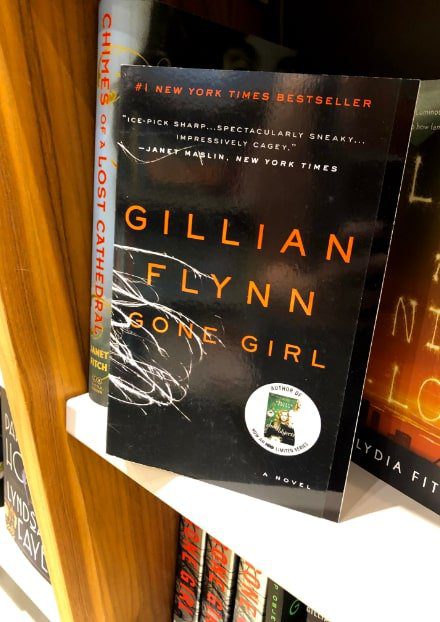
When they shift into genre talk, Meaghan and Shirin start with thrillers and mysteries. Right away, they separate the two: darker thrillers versus cozy or lighter mysteries.
Thrillers, they argue, work best as movies or limited series. Long multi-season arcs tend to wear thin, especially when you’re stretching a single mystery across ten episodes. Think Gone Girl, Nocturnal Animals, or Silence of the Lambs, tight, gripping, and effective because of their shorter format. Limited series can work, but even then, they sometimes feel drawn out (Harlan Coben adaptations, anyone?).
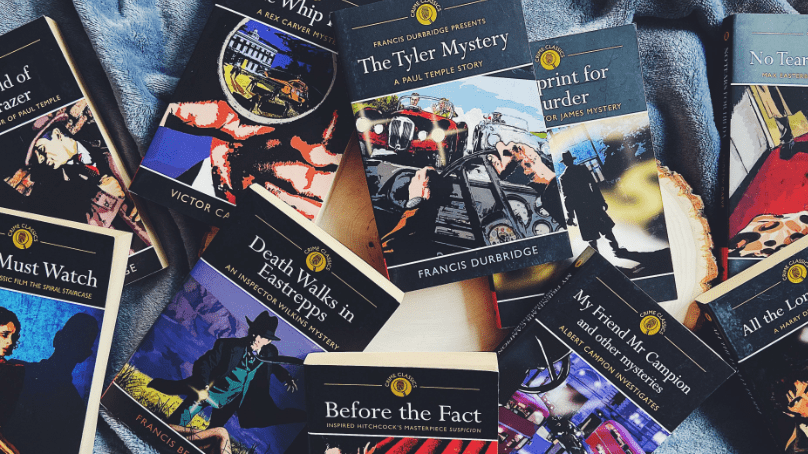
Shirin stresses that the actors and writing carry a huge weight in thrillers. The buildup to the twist needs to be well-paced and believable. If actors can’t sell that tension or the writing fumbles the reveal, it falls flat.
In contrast, lighter mysteries, like Midsomer Murders, Murdoch Mysteries, or Agatha Christie adaptations, thrive in long-running formats. You don’t need high stakes every time. People just want to hang out with familiar characters in familiar settings, solving little whodunnits. You can cruise along with those shows forever, and fans love them for that.
RelatedProject Hail Mary Is About to Go Mainstream – Here’s Why You Should Read It Now
Fantasy: Go Big or Don’t Bother
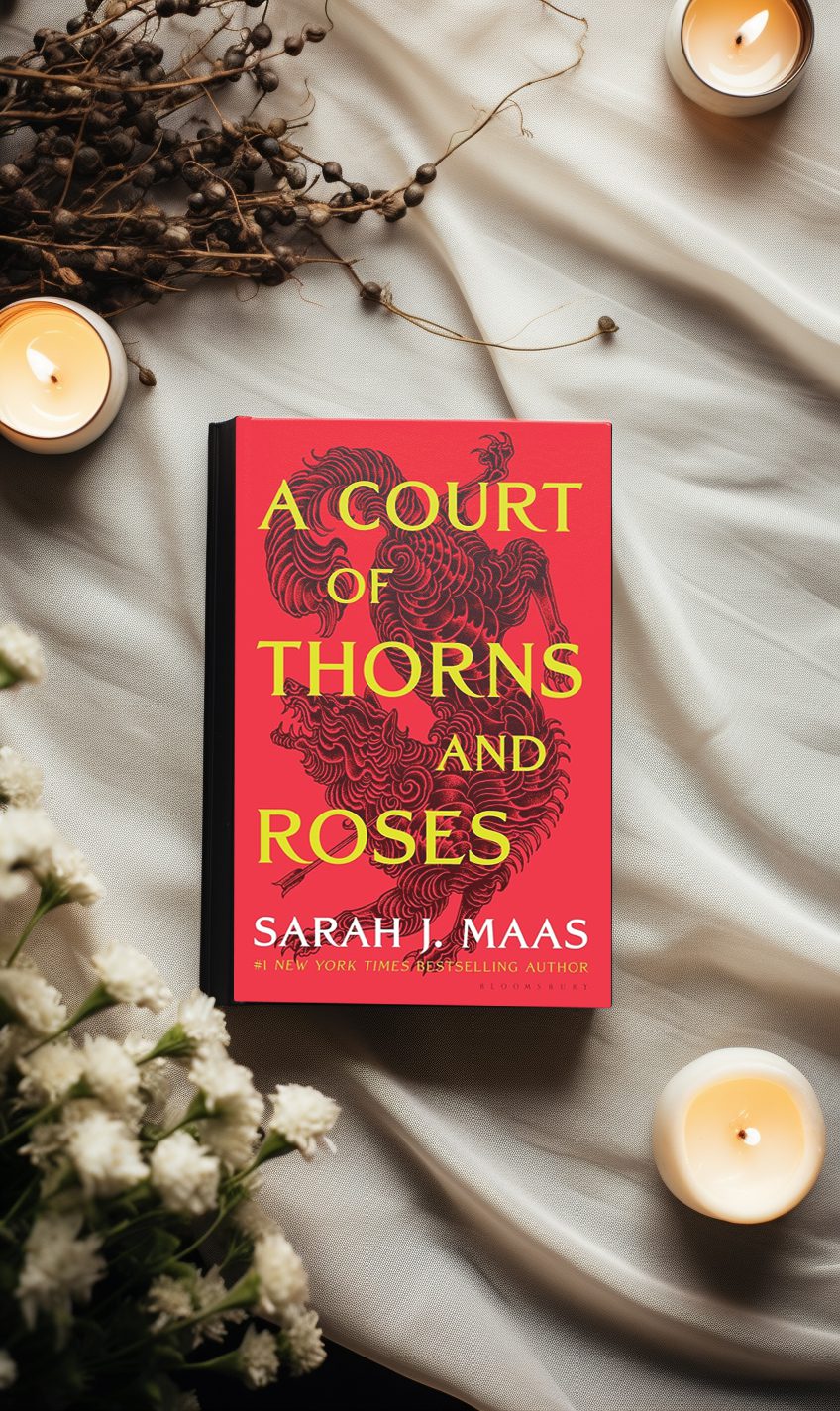
Now fantasy, oh boy. The energy ramps up here. Shirin literally slams pillows in excitement (or frustration?), and Meaghan is right there with her. They both agree fantasy needs to be broken into sub-genres: high fantasy versus urban or low fantasy.
High fantasy, Lord of the Rings, Game of Thrones, Throne of Glass, etc., demands a serious budget and buy-in. You’ve got to build worlds, lore, languages, costumes, effects… It’s a lot. And if you’re not prepared to commit fully, fans will revolt. The pressure to get it right is immense.
They mention Shadow and Bone as an example where merging different series caused mixed reactions. And with something like A Court of Thorns and Roses, the rights keep getting picked up and dropped, probably because studios aren’t ready to face the backlash if they get it wrong. An animated series might be the safest bet.
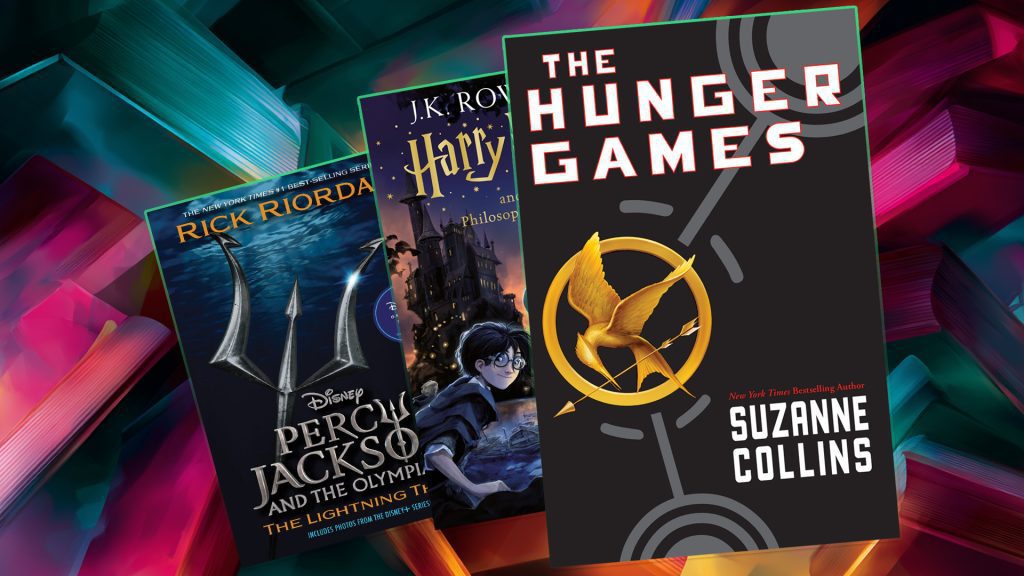
Crucially, they say fantasy only works when the actors genuinely care. The Witcher started strong because Henry Cavill was obsessed with the source material. He lived and breathed Geralt. When his enthusiasm waned, or he left, the show lost something. Passion matters. Compare that to Twilight, where you could tell some actors didn’t care much. But when someone like Michael Sheen shows up, having the time of his life? Magic.
They also point out that most fantasy adaptations need to be multi-season or multi-film affairs. One-off fantasy films rarely work unless the story is very small (think The Princess Bride or Stardust). You need time for exposition and worldbuilding, and rushing it doesn’t work.
Enjoying this article?
Subscribe to our weekly newsletterYoung Adult: Heart Over Hype
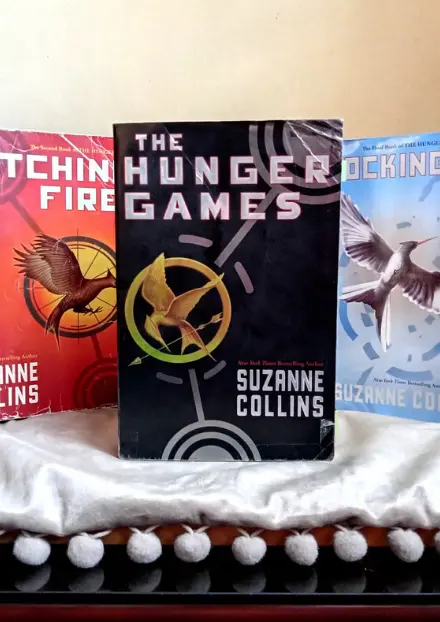
When it comes to YA adaptations, Meaghan and Shirin get pretty honest. It’s not a genre itself, but there’s a clear tone and audience to consider. YA often centers around identity, growth, and personal challenges. That emotional core matters.
The biggest requirement here? Chemistry. The audience needs to believe in the characters. They need to root for them. The Hunger Games worked because you were invested in Katniss. In contrast, 13 Reasons Why lost its way after the first season because it dragged the story far beyond its natural endpoint.
They also discuss how some YA adaptations are stretched too thin. A Good Girl’s Guide to Murder had 10 episodes when 5 or 6 would have been plenty. If the mystery isn’t complicated enough to carry that much screen time, the show starts spinning its wheels.
And again, it comes down to casting. If your leads don’t have good chemistry, the whole thing feels flat. The Notebook worked because of Ryan Gosling and Rachel McAdams. Meanwhile, other Nicholas Sparks adaptations (The Lucky One, anyone?) suffered from leads who looked like strangers.
RelatedWhy Modern Adaptations Are Better Than Ever
Sci-Fi: Surprisingly Reliable

Here’s the twist: neither Meaghan nor Shirin are big sci-fi fans, but they both agree sci-fi adaptations tend to be stronger than fantasy ones. Shocking, right?
They break down why. Sci-fi often requires a decent budget and actors who commit to the world, much like fantasy. But it’s usually easier to adapt because the audience doesn’t expect the same emotional loyalty to worldbuilding. Plus, you don’t always need to reinvent entire landscapes; you can keep it grounded or tech-based (Black Mirror style) and still make it work.
They list several successful examples: Silo, Murderbot, Foundation, Arrival, Dune, and The Martian. All solid adaptations, many of them series. Meaghan notes that series tend to work better in sci-fi, especially when the story has layers of tech, politics, and existential stakes. And yes, she’s looking forward to Project Hail Mary with Ryan Gosling.
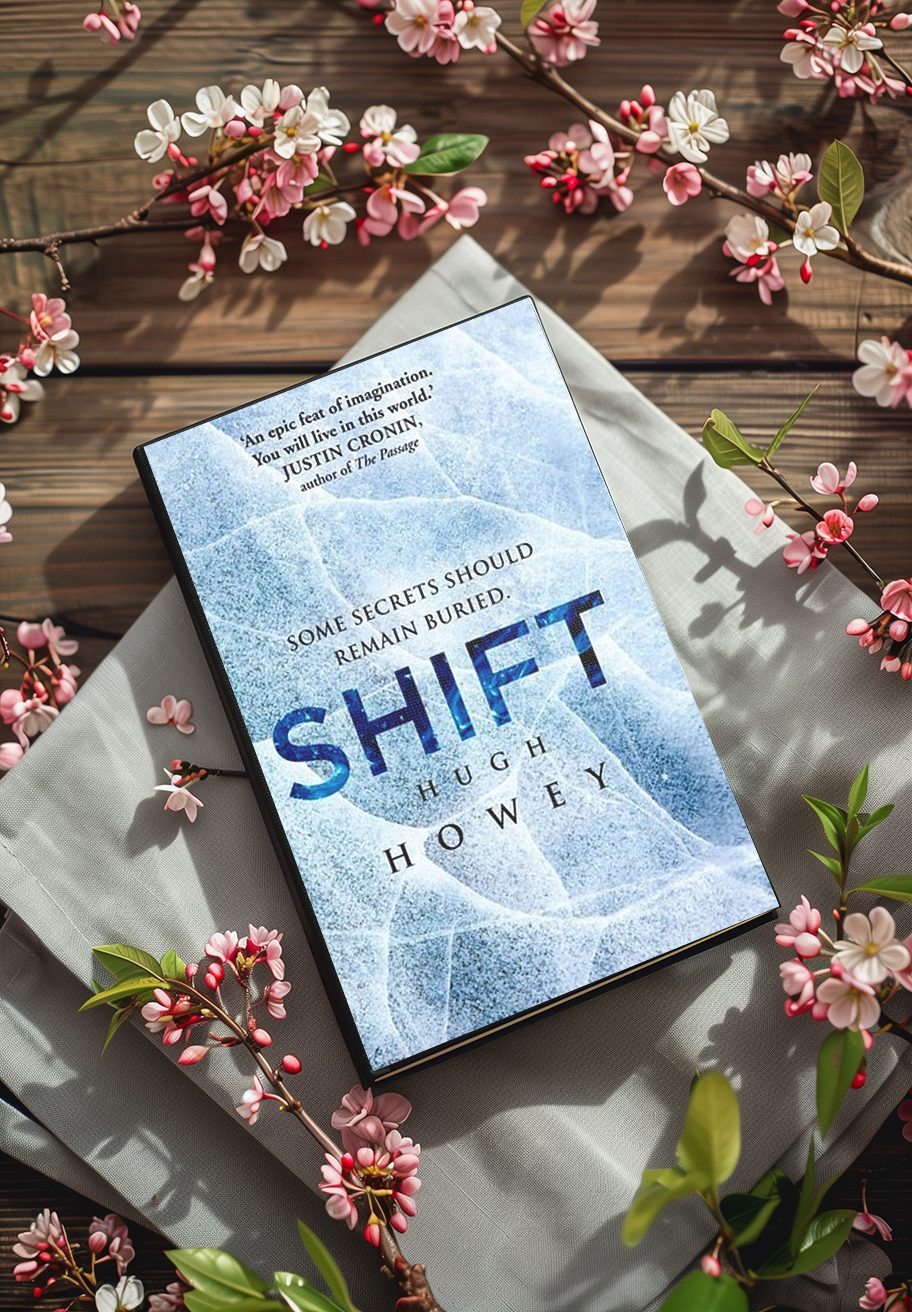
They also discuss how in sci-fi, the alien or AI character is often made to appear human or at least humanoid (Murderbot, for example), which helps with audience connection. It’s rare to see a fully non-human lead in an adaptation, but the human angle often makes the story more accessible.
And finally, they touch on a tough truth: many beloved sci-fi and fantasy writers are problematic. They talk about Orson Scott Card (ugh), J.K. Rowling (yeah…), and H.P. Lovecraft (yikes). It’s hard to reconcile loving a world while rejecting the views of its creator, but that’s the messy reality of adaptations.
RelatedTriple Falls On Film: Can Ravenhood’s Brotherhood Survive The Screen?
Final Thoughts and A Look Ahead
Meaghan and Shirin wrap things up by acknowledging that every genre has been adapted at this point, literary fiction, romance, historical, nonfiction, you name it. But they’ve seen patterns. Mystery and sci-fi adaptations tend to land well in shorter formats. Fantasy is high risk, high reward. YA is all about vibes and chemistry. And romance? It lives or dies by how much your leads look like they’re actually in love.
That’s a wrap on adaptation month for us. Next week, they’re kicking off a brand-new theme for August, and if you’ve enjoyed this ride so far, stick around. You won’t want to miss what’s coming next.

